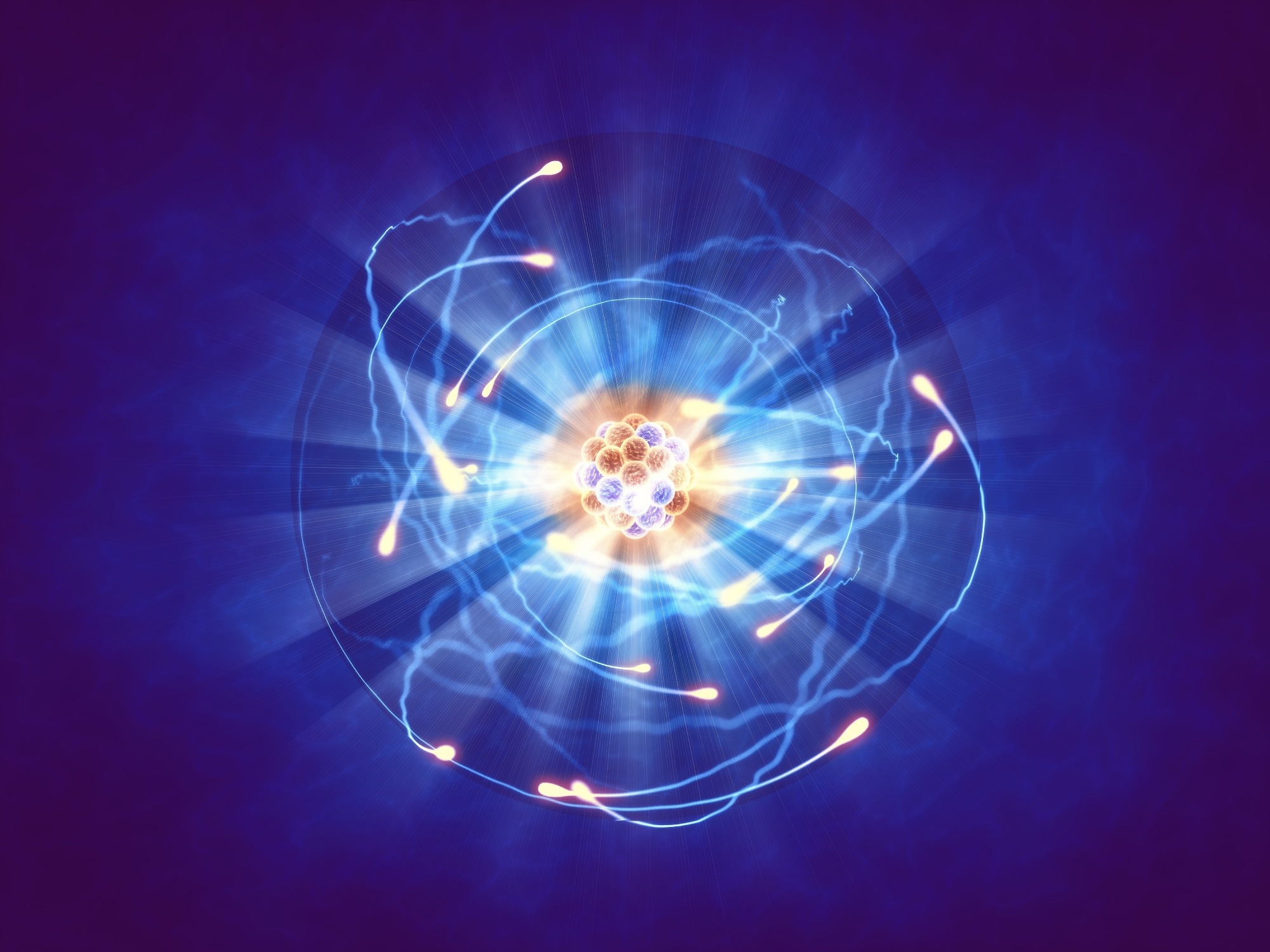A study by an international partnership led by the University of Surrey's Nuclear Physics Group challenges the long-held idea that the atomic nucleus of lead-208 (²⁰⁸Pb) is completely spherical. The discovery calls into question fundamental beliefs about nuclear structure, with far-reaching ramifications for the understanding of how the universe's heaviest elements form.

Image Credit: nobeastsofierce/Shutterstock.com
Lead-208 is the heaviest nucleus known and is extraordinarily stable due to its “doubly magic” nature. However, the new study employed a high-precision experimental probe to check its shape and discovered that rather than being precisely spherical, the nucleus of lead-208 is slightly elongated, resembling a rugby ball (prolate spheroid).
We were able to combine four separate measurements using the world’s most sensitive experimental equipment for this type of study, which is what allowed us to make this challenging observation. What we saw surprised us, demonstrating conclusively that lead-208 is not spherical, as one might naively assume. The findings directly challenge results from our colleagues in nuclear theory, presenting an exciting avenue for future research.
Dr. Jack Henderson, UKRI Future Leaders Fellow, University of Surrey
Scientists used the Argonne National Laboratory’s state-of-the-art GRETINA gamma-ray spectrometer in Illinois, USA, to bombard lead atoms with beams of high-speed particles that were accelerated to 10% of the speed of light, or one orbit around the Earth every second. Due to the interactions, the lead-208 nuclei developed distinct gamma-ray fingerprints of the features of excited quantum states—that is, the nuclei were energized—which were then utilized to ascertain the nuclei’s form.
Since the tests indicate that nuclear structure is significantly more complex than previously believed, theoretical physicists, including those at the Surrey Nuclear Theory Group, are now reexamining the models used to describe atomic nuclei.
These highly sensitive experiments have shed new light on something we thought we understood very well, presenting us with the new challenge of understanding the reasons why. One possibility is that the vibrations of the lead-208 nucleus, when excited during the experiments, are less regular than previously assumed. We are now refining our theories further to determine whether these ideas are right.
Paul Stevenson, Professor and William Penney Fellow, University of Surrey
The study, which assembled a group of specialists from top nuclear physics research institutes in North America and Europe, questions basic nuclear physics theories and creates new opportunities for studying quantum mechanics, astrophysics, and nuclear stability.
Journal Reference:
Henderson, J. et. al. (2025) Deformation and Collectivity in Doubly Magic 208Pb. Physical Review Letters. doi.org/10.1103/PhysRevLett.134.062502